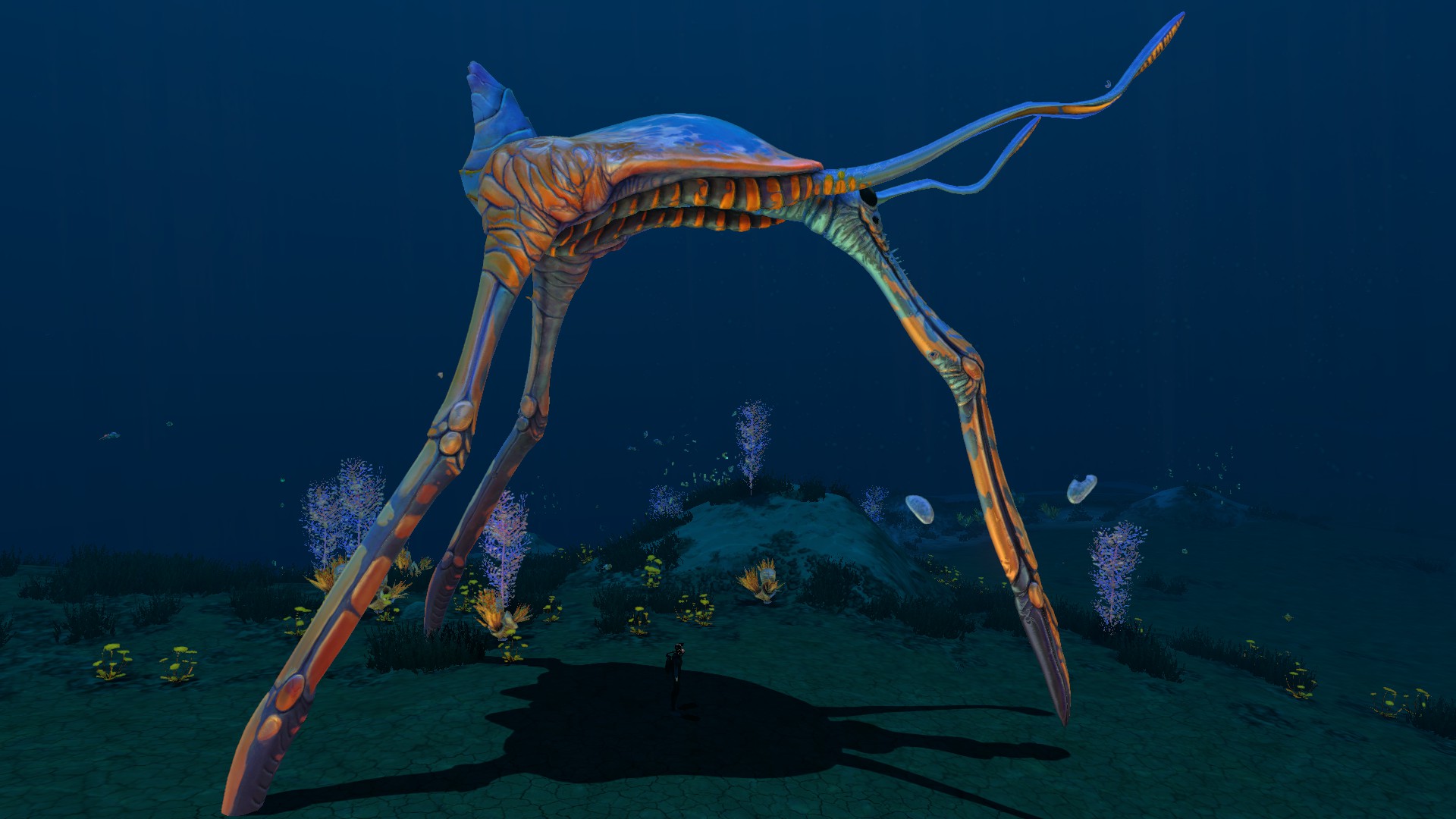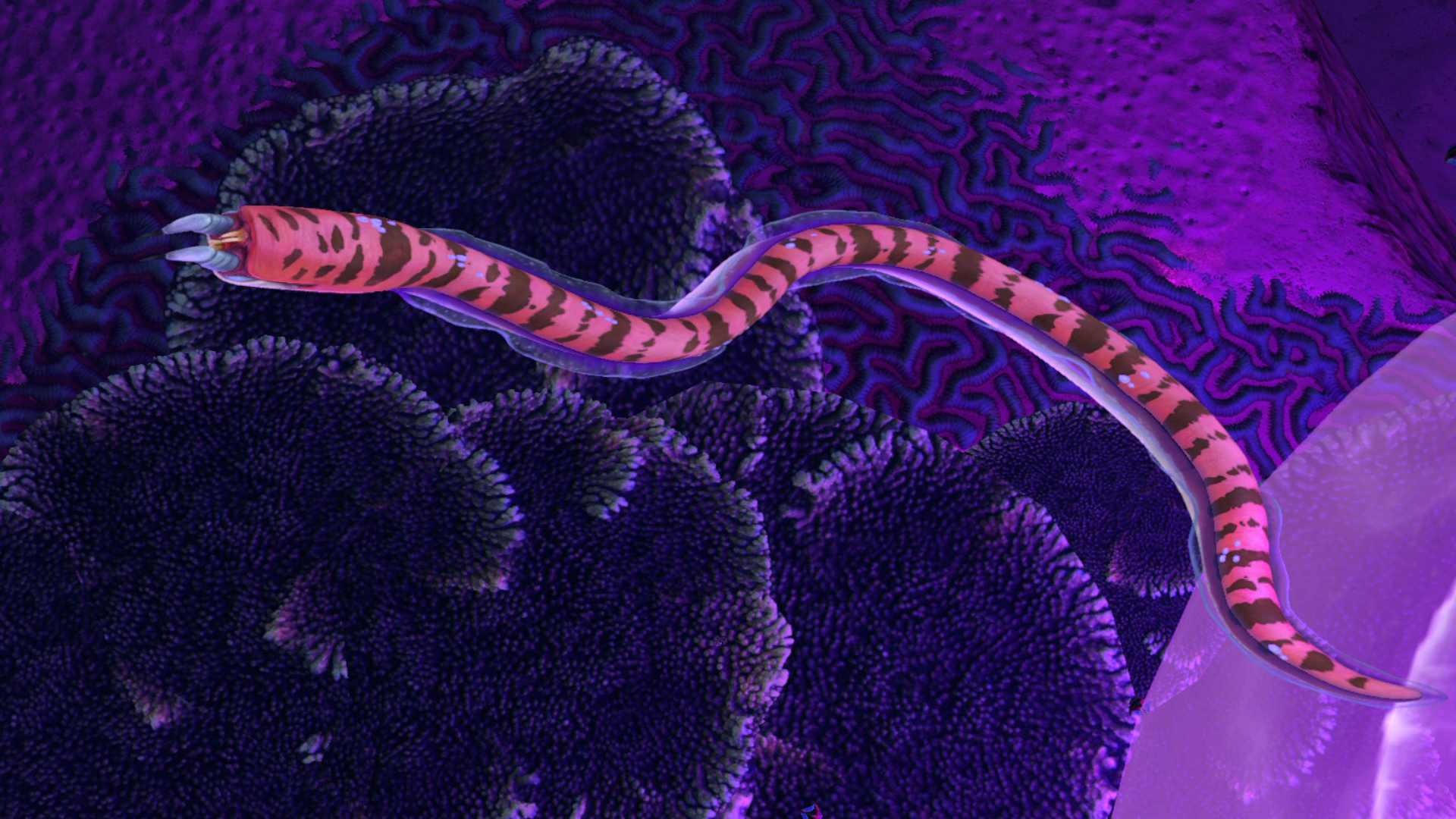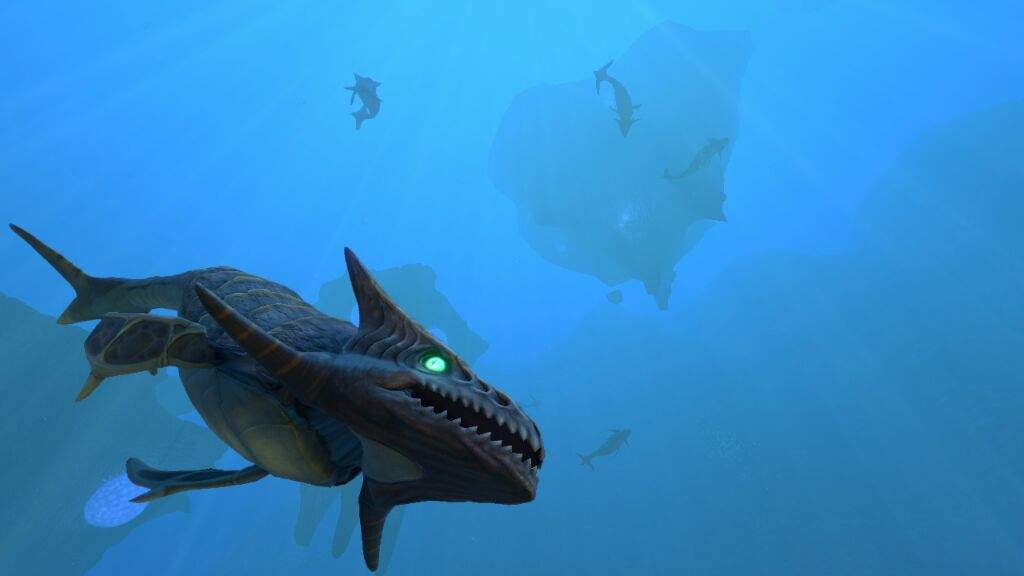
Wildlife of 4546B
One of the most incredible parts of Subnautica, the dozens of unique fauna of 4546B add to the beauty-and terror-of the planet. Every species brings something different to the world, some with their incredible sound design, others with their fangs and fear. This list only covers some of the dynamic creatures that Subnautica has to offer, but they offer a great glimpse into the hauntingly beautiful world.



Bladderfish
Bladderfish are found pretty much everywhere across 4546B. Able to be worked not only into food, but also sources of water, the bladderfish is an essential part of any Subnautica playthrough. They are the player’s easiest source of drinkable water for early gameplay, so they should definitely be looked out for as soon as you boot up the game.
Peeper
Kind of the designated mascot of the game, the peeper is one of the best sources of food throughout Subnautica. Characterized by its giant eyeball, peepers are small, speedy little creatures that the player can catch and cook—if they’re fast enough. Though they might not look very appetizing with that big eye, they’re a valuable food source for early-game players.
Rabbit Ray
Rabbit rays aren’t the most significant species—they are a passive early-game fauna that the player can find. Though they are neither edible nor a species important to the story, they are a rather beautiful, peaceful creature.



Reefback
Reefback leviathans are very popular with Subnautica players—they are a passive fauna that can be encountered from the earliest points of the game to the very end. Popularized by their unique design and comforting calls, the reefback is a beloved Subnautica creature. Their size and flat form mean that various aquatic plants and materials can be found hitching a ride on them, making them a unique farm for resources.
Sea Treader
The sea treader leviathan is a unique creature that can only be found in very specific points of the map. Sea treaders walk across the ocean floor, churning up raw materials from the soil beneath them, and are only aggressive if the player draws too close to them. They’re an interesting fauna within the game, as they are considered leviathan-class, but they aren’t necessarily fish. But they are a beautiful and unique site to behold, as well as a good opportunity to gather up some resources.
Crabsnake
Crabsnakes are one of the bigger jumpscare risks in the game—residing exclusively in the jellyshroom caves, the crabsnake lives inside the bright pink mushrooms and simply lie in wait for any potential prey or player to swim a little bit too close. They are lethal predators but aren’t the deadliest the player will find in their adventures. But that doesn’t mean you won’t find yourself feeling nervous any time you get too close to a jellyshroom.



Boneshark
The boneshark is usually one of the aggressive species of fauna the player will encounter earlier on in the game. Inhabiting biomes closer to the player’s starting point, the boneshark tends to be an early-game risk, and if you aren’t careful, it can be the reason you lose your submarine. The boneshark is highly aggressive and won’t just attack the player but will go directly after any vehicle in their domain. While not necessarily deadly on their own, should you swim too far away from your underwater sub in a biome of bonesharks, you might come back and find your ride has been destroyed.
Crabsquid
The 4546B crabsquid lives primarily in deeper waters. Resembling a crab with its mandibles, the crabsquid swims by inflating and deflating its head. Its memorable clicks and chirps only give the player a couple seconds of warning before it pulses out a wave of electricity that can temporarily disable all electrical equipment. Drawn to light sources, the best move for getting around this aggressive fauna is to turn off all lights and hope it hasn’t noticed you.
Warper
An interesting creature, the warper is a bio-mechanical fauna that seems a little out of place here on 4546B. As their name implies, the warper is capable of teleporting itself and other creatures short distances. When the player first begins to play the game, the warpers are passive and react to them with indifference. But as the game progresses, and the player gets infected with the Kharaa bacteria, warpers will suddenly become aggressive; they will teleport the player out of vehicles to be able to attack them, and they will teleport small aggressive fauna into the area to attack. The warper is able to hit a target with its teleportation from pretty far away, so even keeping your distance might not be enough to avoid becoming its target.



Reaper Leviathan
The reaper leviathan is one of the most infamous creatures in Subnautica and is often coined the scariest creature in the game. Reapers are incredibly aggressive and quick to attack, so some players do what they can to avoid them completely. What makes this creature so scary is not just its deafening roar and body of pure muscle—what frightens players the most is the fact that they share the surface with these creatures, and there are quite a few of them. The reaper leviathan also tends to hunt in murky waters and are one of the only large faunae that is not bioluminescent, so the reaper might be nothing more than a shadow in the water before it moves in for the kill. They’re so deadly that successfully scanning it with the in-game scanner will prompt motivational congratulations from the player’s personal computer for getting so close.
Ghost Leviathan
The ghost leviathan is the second largest aggressive fauna in Subnautica: these leviathan-class predators are found in deeper waters and are classified by their pale blue bioluminescent body and hammerhead shark-like shaped head. The ghost leviathan has an interesting battle tactic, as it doesn’t attempt to eat the player; most of its aggression comes from being territorial, and it’s more interested in scaring the player off than it is killing them. But it can and will kill them and will do so by diving at the player at incredible speed and ramming its head into them or their vehicle. But where these creatures are especially dangerous is out in the Dead Zone: most of the ghost leviathans you can find within the map are technically considered juvenile. When they get too big, they move out to the Dead Zone, where they are much, much bigger and much, much more aggressive. Linger out there too long, and you might draw some unwanted attention towards yourself.
Sea Dragon Leviathan
Draw a little too deep into 4546B, and you might find this guy: the sea dragon leviathan is the largest creature in Subnautica, and one of the deadliest. A massive leviathan-class predator, this monster resides thousands of kilometers below the surface in an underwater magma field. It spits volcanic rock at potential prey and a single bite attack will instantly kill a player. They are highly aggressive, lethal killing machines capable of attacking from a distance. You might not have to share the surface with them, but they’re right underfoot, and unfortunately, they stand between you and your ticket back to earth.